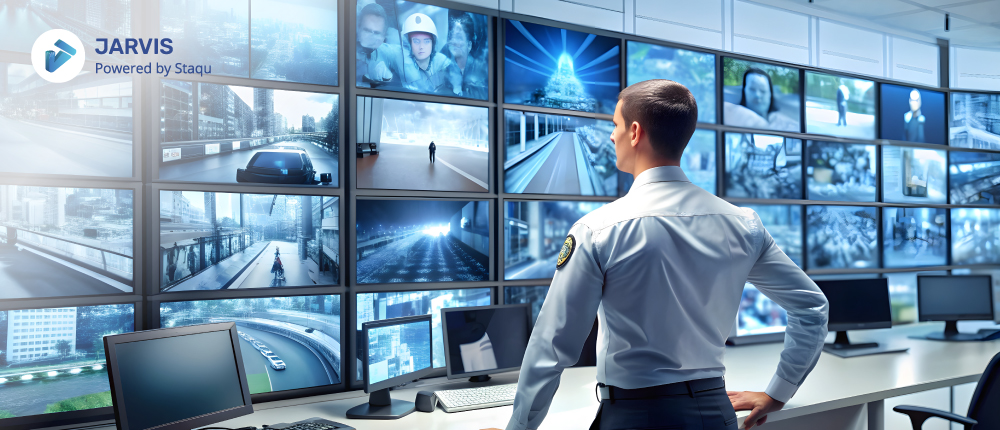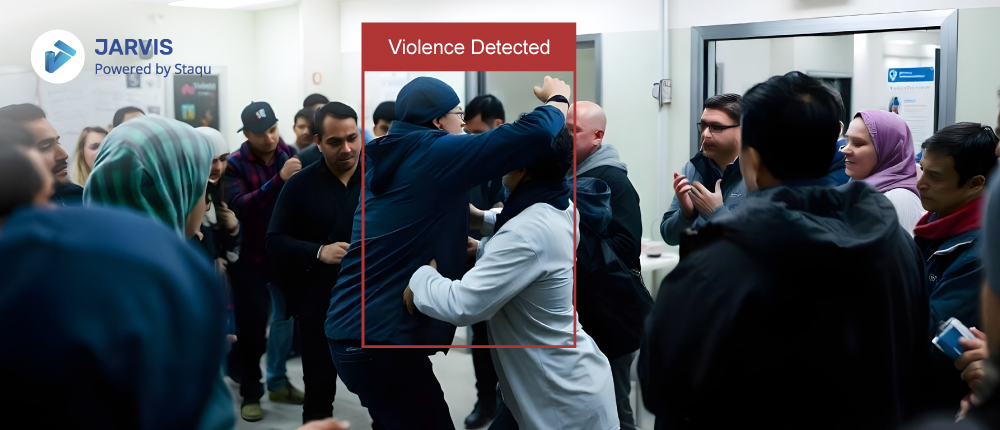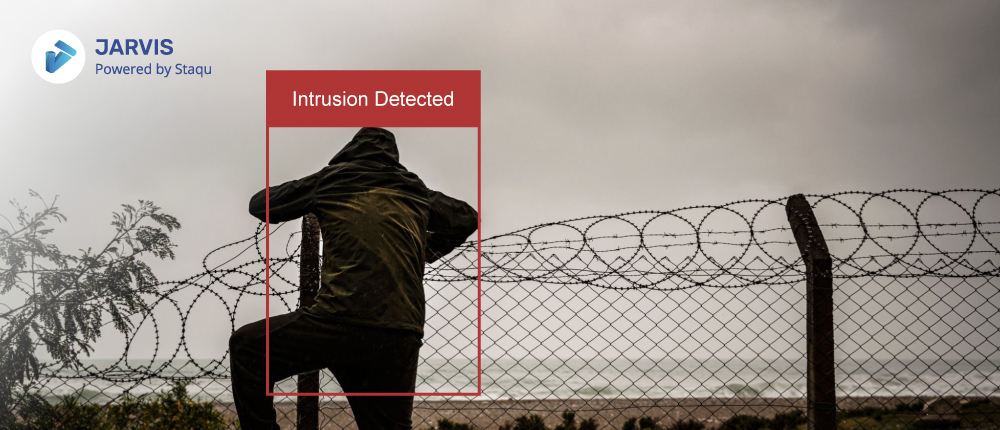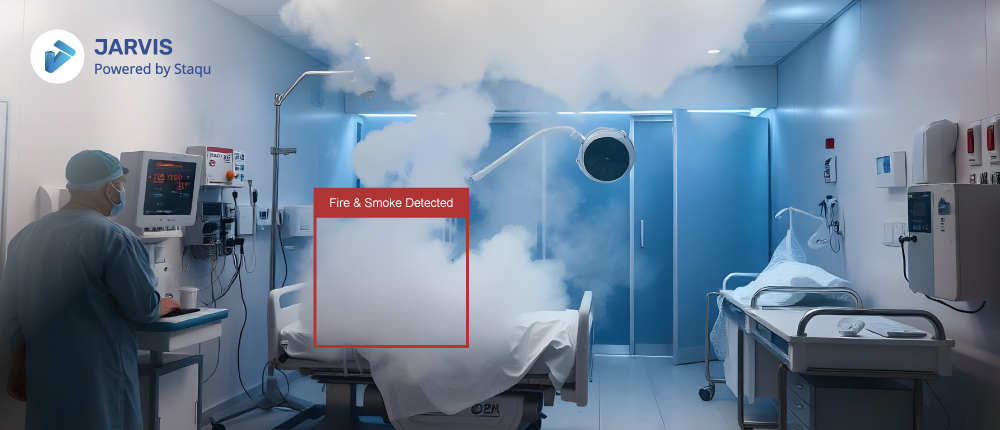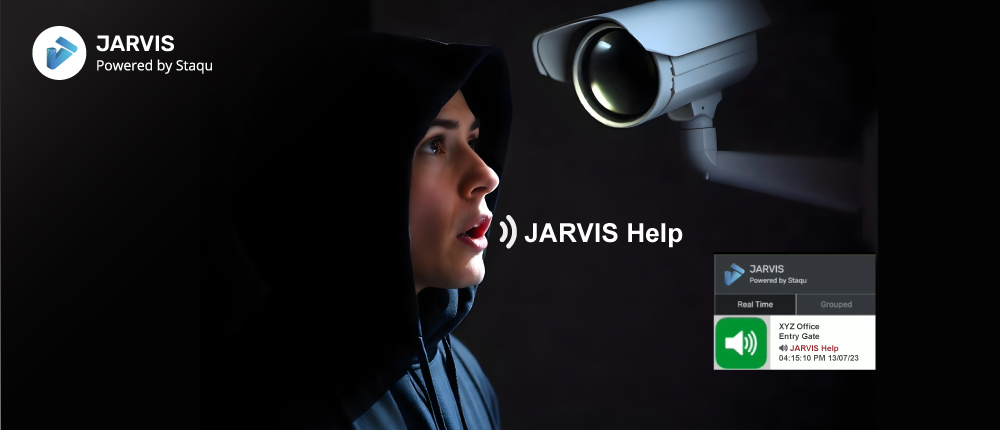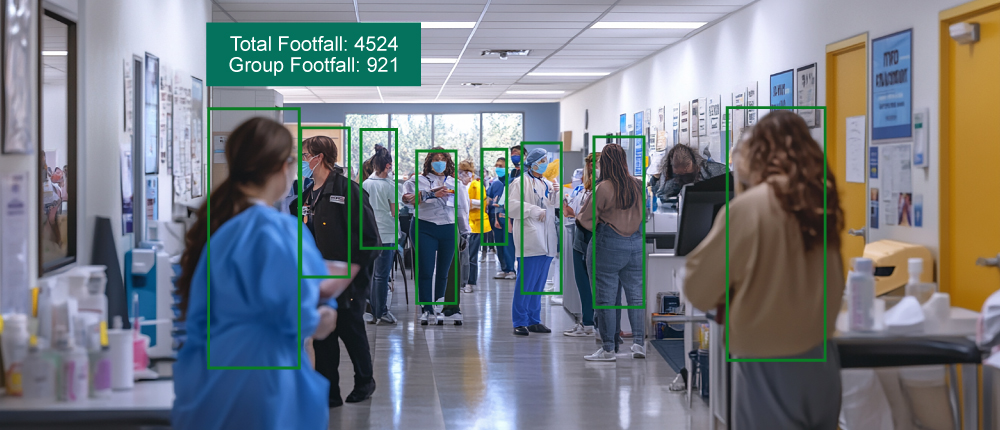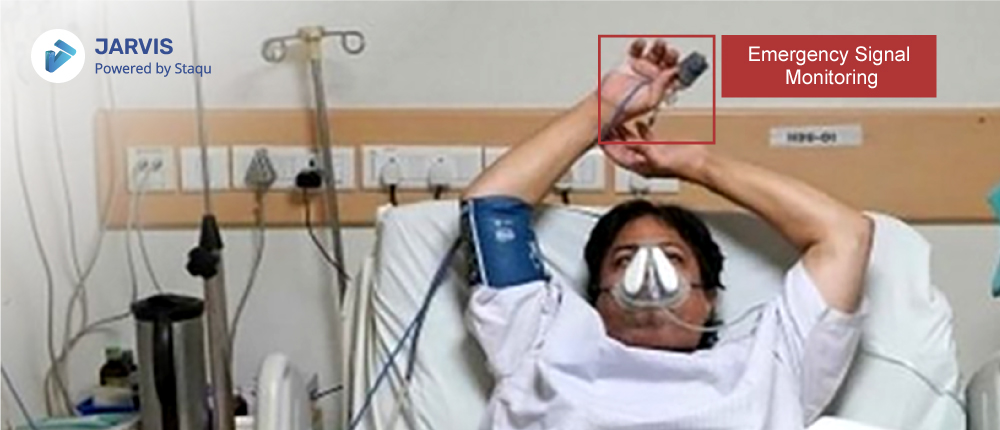Revolutionizing Hospital Security: The Role of AI in Modern Healthcare
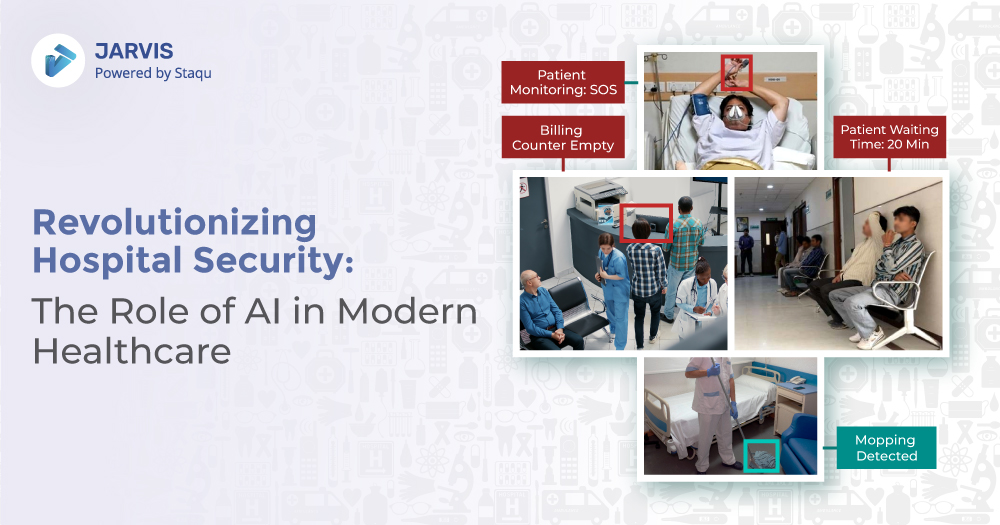
The healthcare sector faces increasing security threats that demand more sophisticated solutions. From unauthorized access to patient data breaches and physical violence, hospitals are under pressure to safeguard patients, staff, and sensitive information. Traditional security measures are no longer sufficient to handle the complexities of a modern healthcare environment. This is where Artificial Intelligence (AI) comes into play. AI-driven solutions, like JARVIS, are transforming hospital security by offering advanced, real-time monitoring and Video analytics capabilities that significantly enhance the safety and efficiency of healthcare facilities.
In this blog, we will explore how AI is redefining hospital security. We’ll delve into specific use cases and security features offered by JARVIS, demonstrating how this technology can revolutionize the way hospitals operate and protect their assets.
The Growing Need for Advanced Security in Hospitals
Challenges in Traditional Hospital Security
Hospitals are dynamic environments with a constant influx of patients, visitors, and staff. Traditional security systems, which often rely on manual monitoring and reactive measures, struggle to keep pace with the demands of such a setting. These systems are typically fragmented, with separate protocols for physical security, data protection, and patient safety, leading to inefficiencies and vulnerabilities.
Manual monitoring is time-consuming and prone to human error, resulting in delayed responses to critical incidents. For example, unauthorized access to restricted areas may go unnoticed until it’s too late, or the identification of a blacklisted individual might be missed due to oversight. These gaps in security can have severe consequences, ranging from theft and vandalism to more serious threats such as patient harm or data breaches.
Emerging Threats in Healthcare Facilities
As healthcare facilities grow more complex and interconnected, the range of security threats they face expands. Hospitals today must contend with a variety of challenges, including:
- Unauthorized Access: Ensuring that only authorized personnel can enter sensitive areas like operating rooms, pharmacies, or data centers is crucial. Breaches in these areas can lead to theft, tampering, or the release of confidential patient information.
- Violence and Aggression: Hospitals are increasingly vulnerable to acts of violence, whether from disgruntled patients, visitors, or even staff. These incidents can disrupt operations and endanger the safety of everyone in the facility.
- Data Breaches: The digitization of healthcare records has made hospitals prime targets for cyberattacks. Protecting patient data from unauthorized access and ensuring compliance with regulations like HIPAA is a significant concern.
- Fire Hazards: With a high concentration of electronic equipment, chemicals, and other flammable materials, hospitals must be vigilant about fire safety. Early detection of fire hazards is essential to prevent disasters.
Given these challenges, it’s clear that hospitals need more than just traditional security measures to safeguard their environments. AI offers a powerful solution by providing the tools needed to anticipate, detect, and respond to these threats more effectively.
How AI is Transforming Hospital Security
Introduction to AI-Powered Solutions
Artificial Intelligence is revolutionizing hospital security by automating and enhancing processes that were once manual and reactive. AI-powered solutions like JARVIS use advanced algorithms and machine learning to analyze vast amounts of data in real time, providing actionable insights that improve security outcomes.
JARVIS, for instance, integrates various security functionalities into a single, cohesive platform, offering capabilities such as facial recognition, intrusion detection, and automated monitoring. These features allow hospitals to move from a reactive to a proactive security stance, addressing potential threats before they escalate.
Key Technologies Driving Change
Several core technologies are driving the transformation of hospital security through AI:
- Facial Recognition: AI-powered facial recognition technology enables hospitals to identify individuals in real-time, even in large crowds. This technology is crucial for controlling access to restricted areas and identifying blacklisted individuals, thereby preventing potential security breaches.
- Machine Learning: Machine learning algorithms allow JARVIS to learn from historical data and improve its predictive capabilities over time. For example, it can detect patterns that indicate potential security threats, such as unusual movement in restricted areas, and trigger automated responses.
- IoT Integration: The Internet of Things (IoT) plays a significant role in hospital security by connecting various devices and sensors to a central AI platform. This integration allows for real-time monitoring and control of different security systems, such as surveillance cameras, access controls, and fire detection sensors.
These technologies work together to create a robust security framework that adapts to the unique needs of each hospital, providing a higher level of protection and operational efficiency.
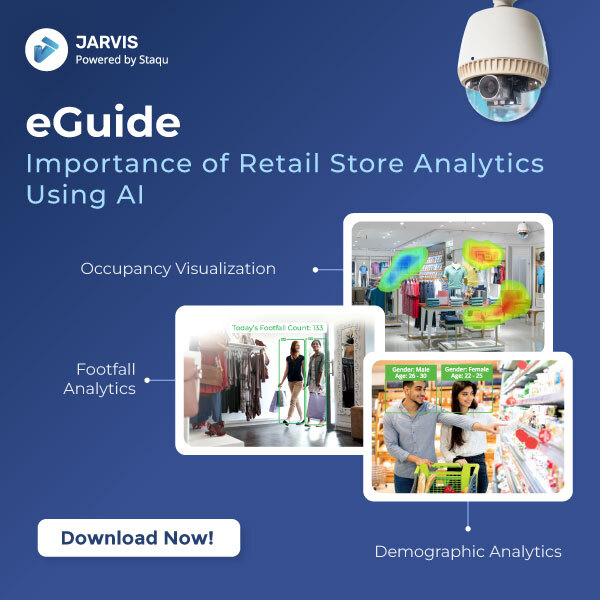
Download eguide
Enhancing Patient Safety with AI-Driven Security Modules
Overcrowding Detection
One of the significant challenges hospitals face is managing overcrowding, especially in emergency departments and waiting areas. Overcrowding not only poses a risk to patient safety but also compromises the quality of care. JARVIS’s AI-driven overcrowding detection module uses real-time data from surveillance cameras to monitor the number of people in a given area.
When the system detects that a space is nearing or exceeding capacity, it automatically triggers alerts to hospital staff, allowing them to take immediate action. This might involve redirecting patients to less crowded areas, adjusting staff assignments, or opening additional treatment spaces. By preventing overcrowding, JARVIS helps maintain a safe and efficient environment, reducing the risk of incidents and ensuring that patients receive timely care.
Blacklisted Person Detection
Hospitals must be vigilant about who enters their premises, particularly individuals who have previously caused disruptions or pose a security threat. JARVIS’s blacklisted person detection feature uses AI-powered facial recognition to scan everyone who enters the hospital. The system compares each face against a database of known blacklisted individuals.
If a match is found, JARVIS immediately notifies security personnel, who can then take appropriate action, such as denying entry or monitoring the individual closely. This proactive approach helps prevent potential incidents before they occur, safeguarding both patients and staff.
Intrusion and Tailgating Detection
Unauthorized access to restricted areas is a significant security concern in hospitals. Tailgating, where an unauthorized person follows an authorized individual into a secure area, is a common tactic used to breach security. JARVIS addresses this issue with its advanced intrusion and tailgating detection capabilities.
Using a combination of AI and IoT sensors, JARVIS can detect when someone attempts to enter a restricted area without proper authorization. The system differentiates between authorized and unauthorized individuals, even in complex scenarios where multiple people are present. When a potential intrusion is detected, JARVIS sends an immediate alert to security personnel, enabling them to respond swiftly and effectively.
Fire Detection
Fire safety is paramount in any hospital setting, given the presence of vulnerable patients and the need for uninterrupted medical services. Traditional fire detection systems often rely on smoke detectors, which may not always provide early enough warnings. JARVIS enhances fire safety by using AI to analyze video feeds in real-time for signs of smoke, flames, or unusual heat patterns.
The AI-driven system can detect a fire hazard at its earliest stages, well before it triggers traditional smoke alarms. Once detected, JARVIS can automatically initiate fire response protocols, such as alerting emergency services, activating fire suppression systems, and evacuating affected areas. This rapid response capability significantly reduces the risk of fire-related injuries and damage.
Facial Recognition Access Controls
Ensuring that only authorized individuals can access sensitive areas is critical in a hospital. JARVIS’s facial recognition access controls provide an additional layer of security by using AI to verify identities in real-time. This technology replaces or supplements traditional access methods like keycards or PIN codes, which can be lost, stolen, or shared.
With JARVIS, only those whose facial features match the pre-approved database are granted access to restricted areas. This feature is particularly useful in high-security zones such as operating rooms, data centers, and pharmacies. By automating access control, JARVIS reduces the likelihood of unauthorized access and enhances overall security.
Jarvis Help (SOS Detection)
In emergencies, every second counts. JARVIS’s “Jarvis Help” feature allows hospital staff and patients to call for assistance simply by speaking in front of a camera. The AI system is trained to recognize distress signals and keywords that indicate a need for help.
Once a help request is detected, JARVIS immediately alerts security or medical personnel, providing them with the location and context of the situation. This rapid response capability can make a significant difference in critical situations, ensuring that help arrives promptly when needed.
Optimizing Hospital Operations with AI-Powered Analytics
Footfall Analysis
Understanding patient and visitor flow within a hospital is crucial for optimizing operations and ensuring a smooth experience. JARVIS’s footfall analysis feature provides detailed insights into how people move through the hospital, from entrance to exit.
By analyzing this data, hospitals can identify peak times for different areas, such as outpatient clinics, emergency rooms, or cafeterias. This information can be used to optimize staffing levels, reduce wait times, and enhance patient care. For example, if JARVIS identifies a bottleneck in the registration area during certain hours, the hospital can allocate additional staff or open more registration desks during those times.
Heatmap Analysis & Planogram Mapping
JARVIS takes operational optimization a step further with heatmap analysis and planogram mapping. Heatmaps visually represent areas of high and low activity within the hospital, helping administrators understand how different spaces are used.
Planogram mapping involves creating a detailed layout of the hospital, showing the placement of equipment, furniture, and other assets. By combining heatmap data with planogram mapping, hospitals can optimize space utilization, ensuring that critical resources are positioned where they are most needed.
For example, if JARVIS’s heatmap analysis shows that a particular corridor is frequently congested, the hospital might redesign that space to improve flow or relocate equipment to less busy areas. This not only improves operational efficiency but also enhances the patient experience by reducing congestion and ensuring that resources are readily accessible.
AI-Powered Ward Monitoring
Inpatient care is a core function of any hospital, and effective ward monitoring is essential for patient safety and care quality. JARVIS’s AI-powered ward monitoring system provides continuous, real-time oversight of patient wards, detecting and alerting staff to potential issues before they escalate.
This system can monitor patient movement, vital signs, and environmental conditions, such as temperature and humidity. If JARVIS detects an anomaly, such as a patient leaving their bed unexpectedly or a sudden drop in temperature, it can immediately alert medical staff, allowing them to respond swiftly.
By providing this level of detailed monitoring, JARVIS helps prevent falls, medical errors, and other incidents that could compromise patient safety. Additionally, the data collected through ward monitoring can be used for long-term planning and resource allocation, further enhancing the hospital’s ability to provide high-quality care.
Centralized Monitoring and Remote Access
Remote Centralized Monitoring
One of the biggest advantages of AI-driven security systems like JARVIS is centralized monitoring. For hospitals with multiple buildings or campuses, JARVIS offers a unified platform. All security and operational data can be monitored in real time from a single control center.
This centralized approach lets security teams oversee the entire facility from one location, no matter the size or complexity. They can monitor live video feeds, access control logs, and environmental sensors, making it easier to spot and respond to potential threats.
Integration with Existing Security Infrastructure
Hospitals often have existing security systems in place, such as CCTV cameras, access control systems, and fire alarms. JARVIS is designed to integrate seamlessly with these systems, enhancing their capabilities without requiring a complete overhaul.
For example, JARVIS can connect to existing CCTV networks, using AI to analyze video feeds and detect potential security threats automatically. Similarly, it can integrate with access control systems to add facial recognition capabilities, providing an additional layer of security.
This integration allows hospitals to leverage their existing investments while benefiting from the advanced features of AI-driven security. It also ensures a smooth transition to the new system, minimizing disruption to daily operations.
Real-Time Alerts and Notifications
A key benefit of AI-driven security is real-time alerts and notifications. JARVIS continuously monitors the hospital environment. When it detects a threat or anomaly, it immediately notifies the relevant personnel.
These alerts can be tailored to the hospital’s specific needs. For instance, JARVIS can send instant notifications to security teams for unauthorized access. Medical staff might receive alerts for patient-related issues, like sudden changes in vital signs.
By providing real-time alerts, JARVIS enables a quicker and more coordinated response to incidents. This reduces the risk of harm and improves overall safety.
Case Studies: AI in Action – Success Stories from Hospitals
Case Study 1: Overcrowding Prevention in Emergency Departments
One of the busiest areas in any hospital is the emergency department (ED), where overcrowding can lead to delayed care, patient dissatisfaction, and increased risk of medical errors. A large metropolitan hospital implemented JARVIS to address these challenges.
By using JARVIS’s overcrowding detection module, the hospital could monitor the number of people in the ED in real-time. When the system detected that the department was approaching capacity, it automatically alerted hospital administrators. This allowed them to take immediate action, such as opening additional treatment areas or redirecting non-critical patients to other facilities.
As a result, the hospital saw a significant reduction in wait times and an improvement in patient satisfaction scores. Additionally, the proactive management of overcrowding helped prevent incidents related to delayed care, enhancing overall patient safety.
Case Study 2: Preventing Unauthorized Access with Facial Recognition
A pediatric hospital struggled to control access to its neonatal intensive care unit (NICU). This area is highly sensitive, allowing only authorized personnel and family members. Traditional methods like keycards were insufficient because they could be lost or shared.
The hospital implemented JARVIS’s facial recognition access control system. Now, only pre-approved individuals can enter the NICU. The system tracks all access attempts and provides a detailed log for security audits.
This new approach significantly lowered the risk of unauthorized access, keeping the NICU secure for vulnerable infants. The hospital also noted increased peace of mind among staff and families, knowing that access is tightly controlled.
Case Study 3: Early Fire Detection and Prevention
A large general hospital with multiple buildings and a high volume of electronic equipment faced challenges in maintaining effective fire safety. Traditional smoke detectors provided alerts only after a fire had already started, leaving little time for a response.
The hospital integrated JARVIS’s AI-driven fire detection system, which could identify fire hazards in their early stages. The system monitored video feeds for signs of smoke, flames, or unusual heat patterns, triggering alerts well before traditional smoke alarms.
In one instance, JARVIS detected a small fire in an electrical room, allowing the hospital to respond quickly and prevent it from spreading. The early detection and rapid response prevented significant damage and ensured the safety of patients and staff.
The Future of Hospital Security: AI’s Evolving Role
Emerging Trends in AI and Healthcare Security
The role of AI in hospital security is continually evolving, driven by advancements in technology and the growing complexity of healthcare environments. Several trends are likely to shape the future of AI in hospital security:
- Predictive Analytics: As AI systems like JARVIS collect more data, they will become better at predicting potential security threats before they occur. This could involve analyzing patterns of behavior to identify risks or using historical data to anticipate future incidents.
- Integration with Smart Devices: The proliferation of smart devices in healthcare will offer new opportunities for AI-driven security. For example, wearable devices could be used to monitor patient vitals in real-time, with AI systems providing instant alerts for any anomalies.
- Fully Automated Security Systems: As AI technology advances, the possibility of fully automated security systems becomes more realistic. These systems could handle all aspects of hospital security, from monitoring and detection to response and reporting, with minimal human intervention.
The Role of AI in Creating Safer, Smarter Hospitals
AI isn’t just about improving security; it’s about building safer, smarter hospitals that adapt to healthcare’s evolving needs. Integrating AI into security infrastructure allows hospitals to maintain higher care standards, protect sensitive data, and ensure a secure environment.
As hospitals adopt AI-driven solutions like JARVIS, they become better equipped to handle modern healthcare challenges. These challenges include managing large patient volumes and addressing complex security threats. The future of hospital security will be AI-driven, and those who embrace this technology will lead healthcare innovation.
